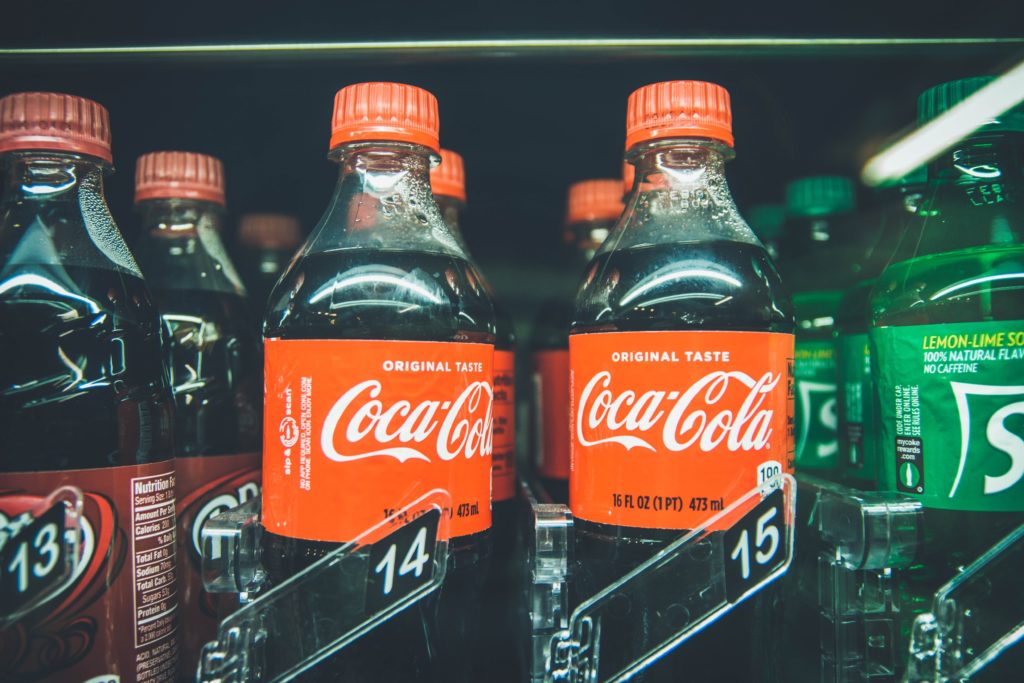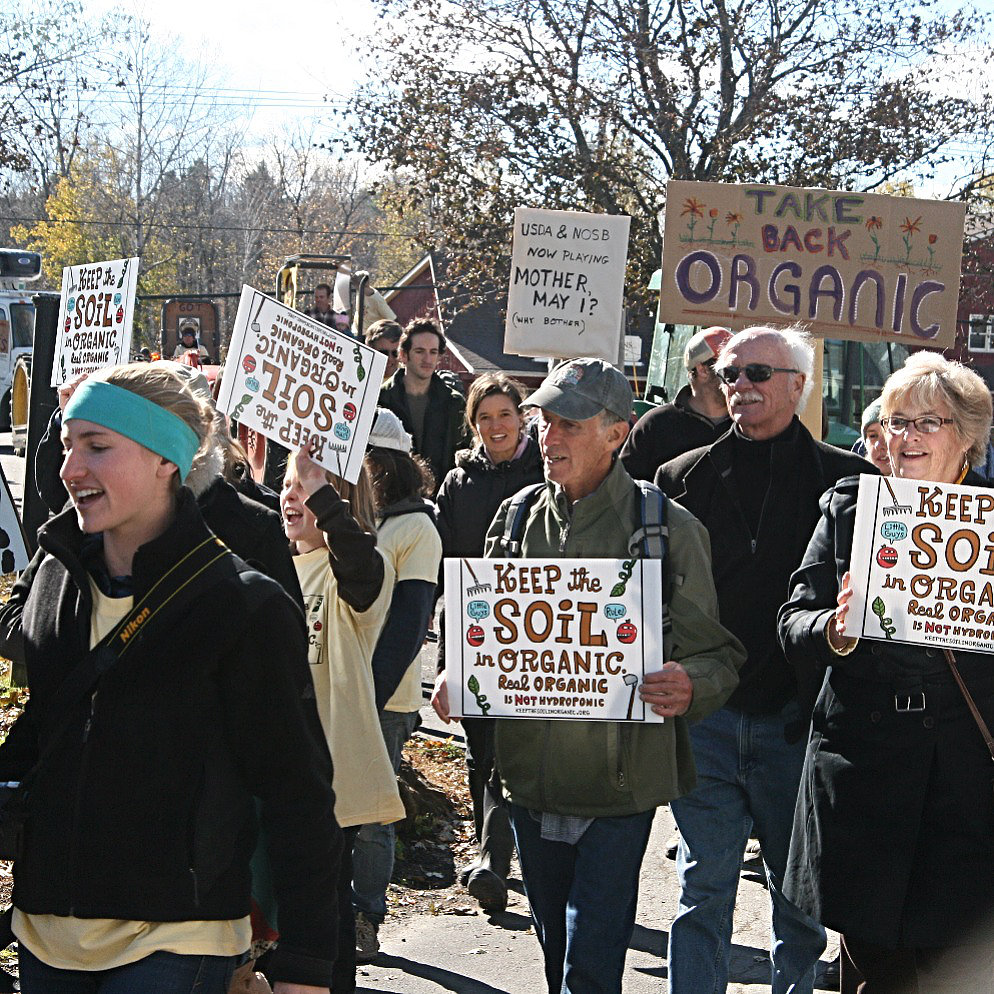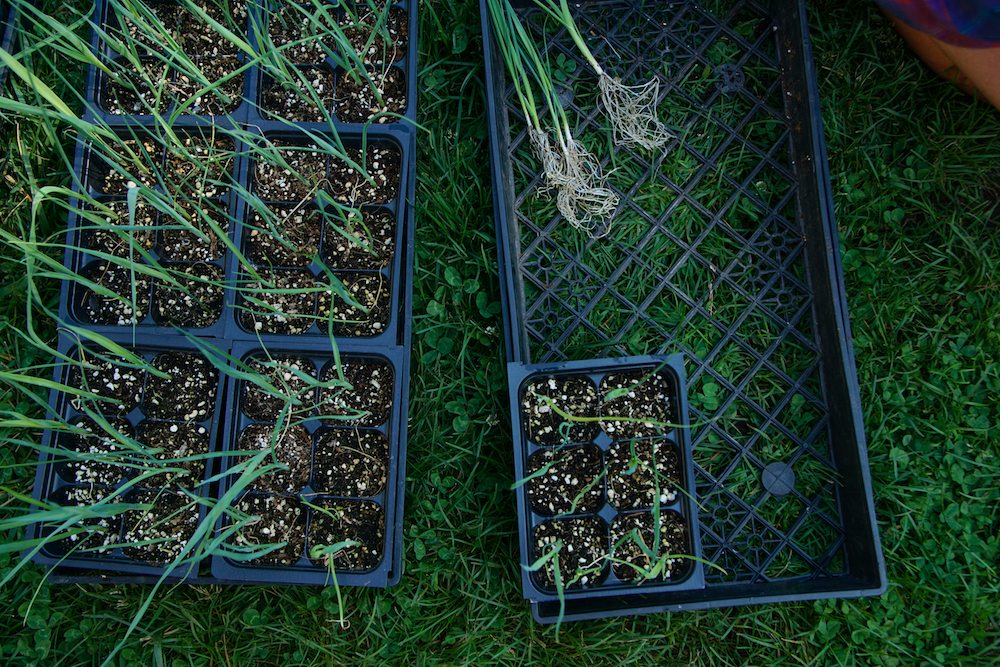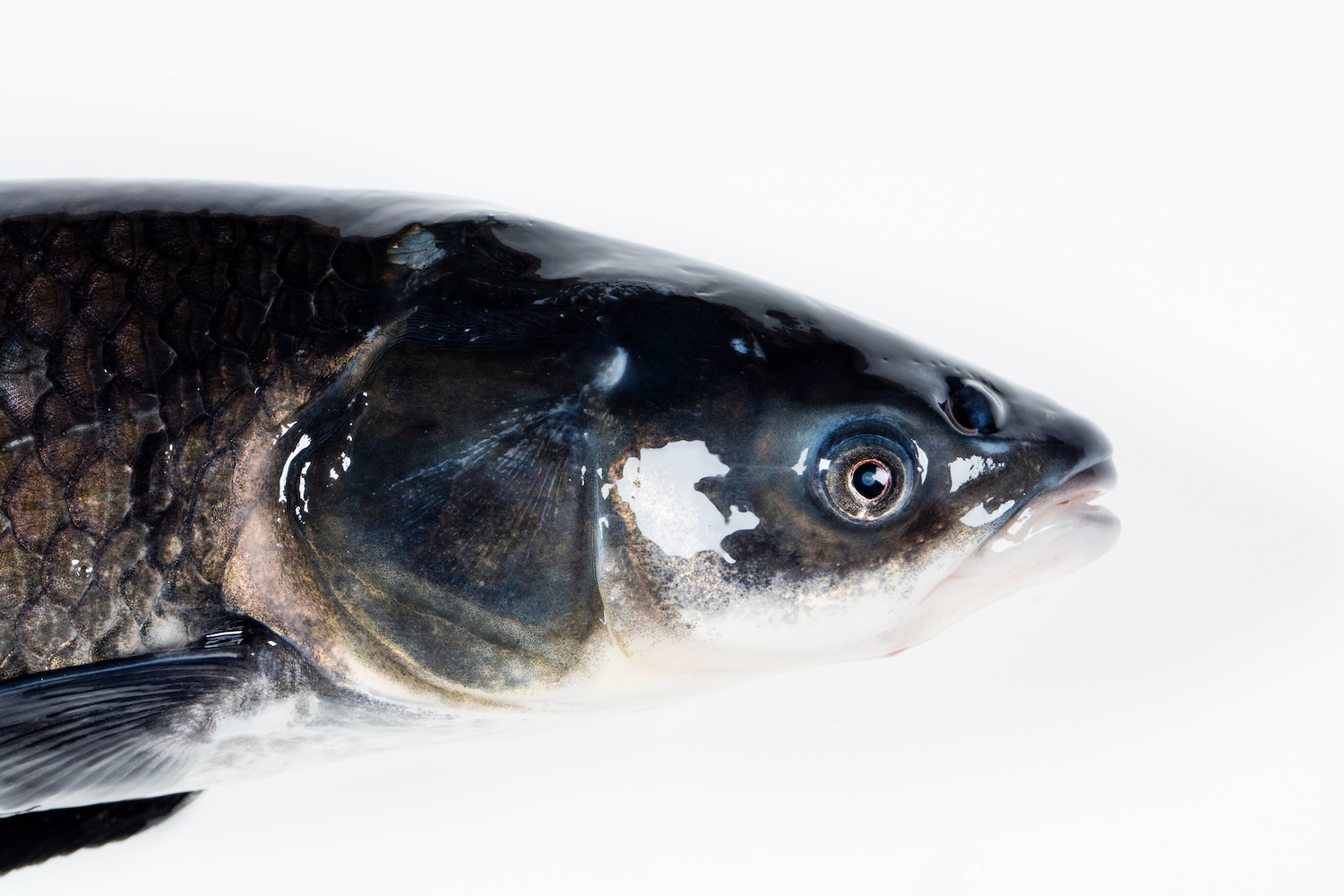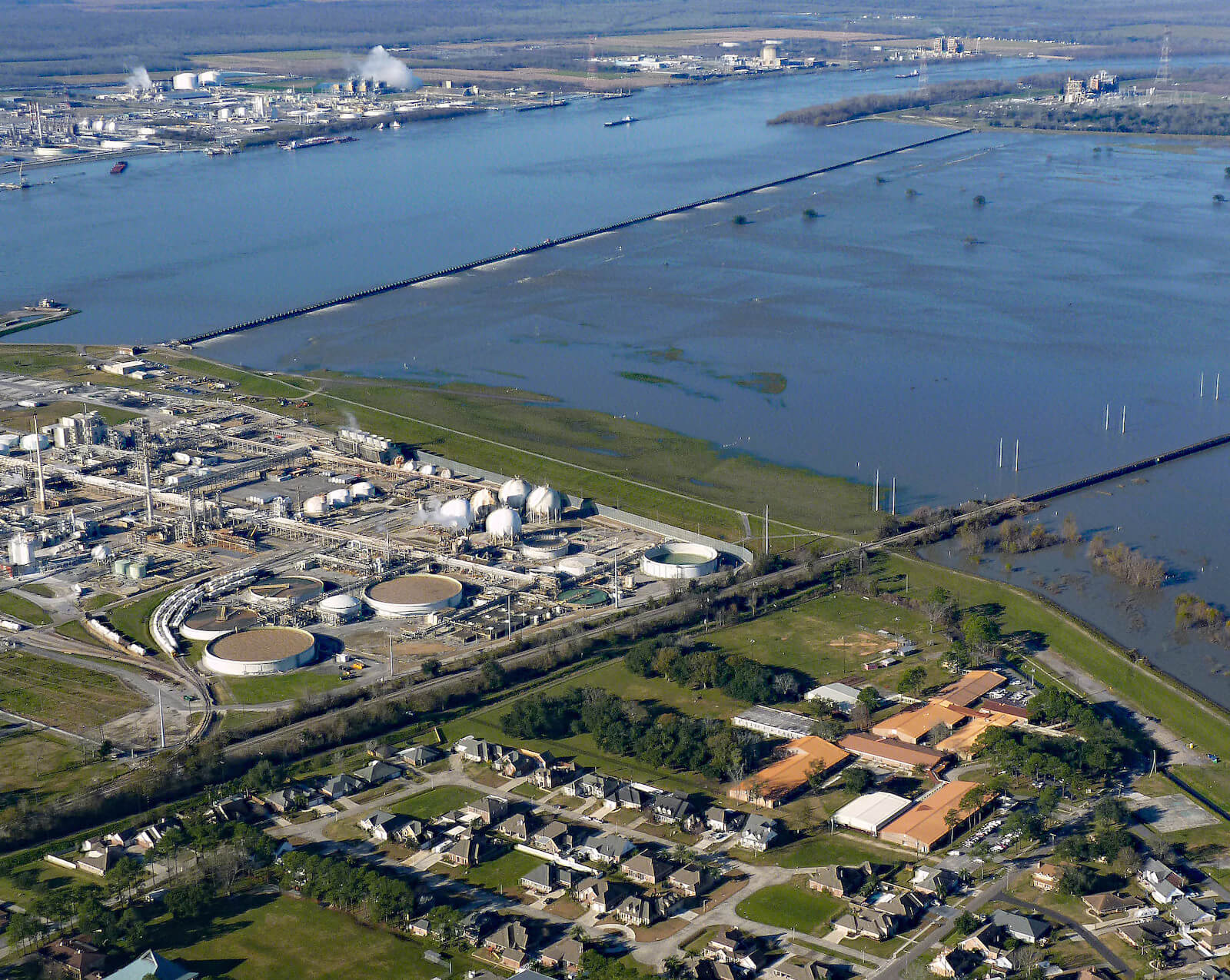
Flickr / U. S. Army Corps of Engineers
The flood-control system meant to protect people and their dwellings has wreaked havoc on coastal ecosystems, killing saltwater species in a deluge of redirected river water.
In late May, the night almost all the farm-raised oysters in Mississippi died, chef Alex Perry was preparing dinner at Vestige, his fine-dining restaurant in Ocean Springs. A semi-finalist for the coveted James Beard Award in 2019, Perry was one of the first to bring the farm-to-table ethos to the Mississippi Gulf Coast. He’s been celebrated for highlighting the region’s abundant seafood bounty in dishes like wok-fried octopus with shishito peppers and pickled Gulf shrimp.
And, last year, when the state of Mississippi launched a set of off-bed oyster farms using a million-dollar federal loan funded through Deepwater Horizon payouts, Perry was one of the first customers. Throughout the spring of 2019, he served the bivalves raw, accompanied with a mignonette sauce made from strawberry vinegar and Japanese bunch onions, all locally grown.
Diverted river floodwater is wreaking havoc on coastal ecosystems in the Mississippi Sound.
The sales were unbelievable, Perry says. But the program came to an unexpected end when, in the first week of June, the oyster supply went “off a cliff.”
Seemingly overnight, almost all of Mississippi’s farm-raised oysters had perished. That wasn’t all. The state’s wild oyster reefs, too, saw mortality rates above 90 percent. Commercial blue crab landings were down more than 25 percent compared to five-year averages; state scientists found the brown shrimp population was down more than 80 percent. The state’s Gulf Coast had been ravaged.
The symptoms can all be traced back to one likely cause. This year, an unprecedented volume of fresh water was diverted out of the Mississippi River, into the typically briny Mississippi Sound, which sits just east of New Orleans. That’s the consequence of a historically rainy year and a flood-control system designed to protect New Orleans. But the system meant to protect people and their dwellings has wreaked havoc on coastal ecosystems, killing saltwater species in a deluge of redirected river water. And in our warming climate, 2019’s record-breaking rains will not be an anomaly. It’s all but guaranteed to happen again.
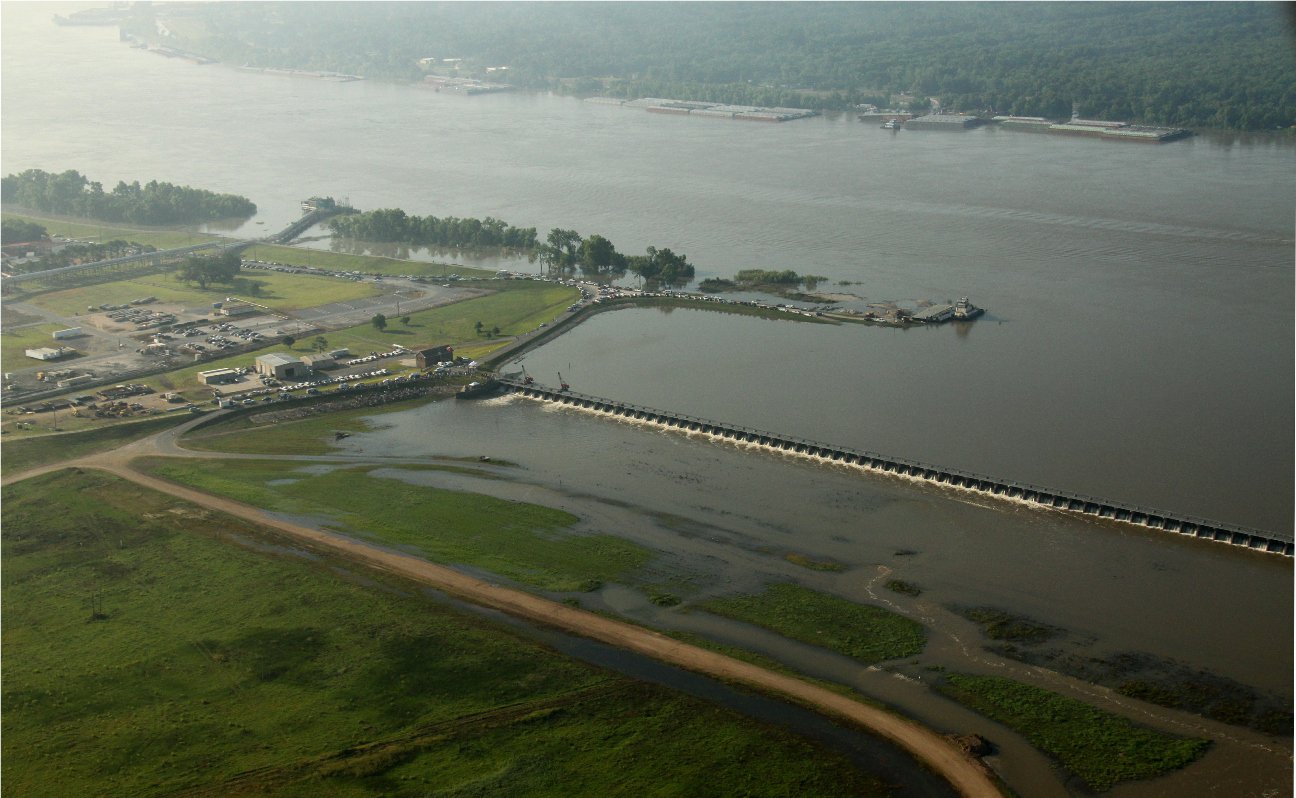
An aerial view of the Bonnet Carre Spillway on May 9, 2011—one of six times it was opened in the last 11 years. The U.S. Army Corps of Engineers had originally predicted it would be used once a decade.
The disaster was disruptive enough to Perry’s restaurant. But he’s even more worried about his suppliers. During one of our conversations, in August, he was preparing for a fundraising dinner at a local museum. The theme: “Stand Up for Our Gulf Waters.”
“You can survive one disaster,” he told me. “Then you’re wiped out again? Do you come back from that? Do you want to keep throwing money in it?”
—
When Anita and Mike Arguelles got into oyster farming, they worried about hurricanes and Vibrio bacteria and employee mishaps. They were prepared for—and insured against—those hazards. “But this is one we didn’t see coming,” Anita says.
The Arguelleses are a part of Mississippi’s new batch of oyster farmers; 13 farmers completed state-led training last year and opened private leases in the Mississippi Sound. The Arguelleses signed up because, as the owners of a marine construction firm, they had access to necessary inputs—a boat, a labor supply—and because Mike was already an evangelist. He had a recreational tonging license, and, decades before oysters were hip, he would cart his catch inland, foisting them on less-than-enthusiastic tailgate crowds.
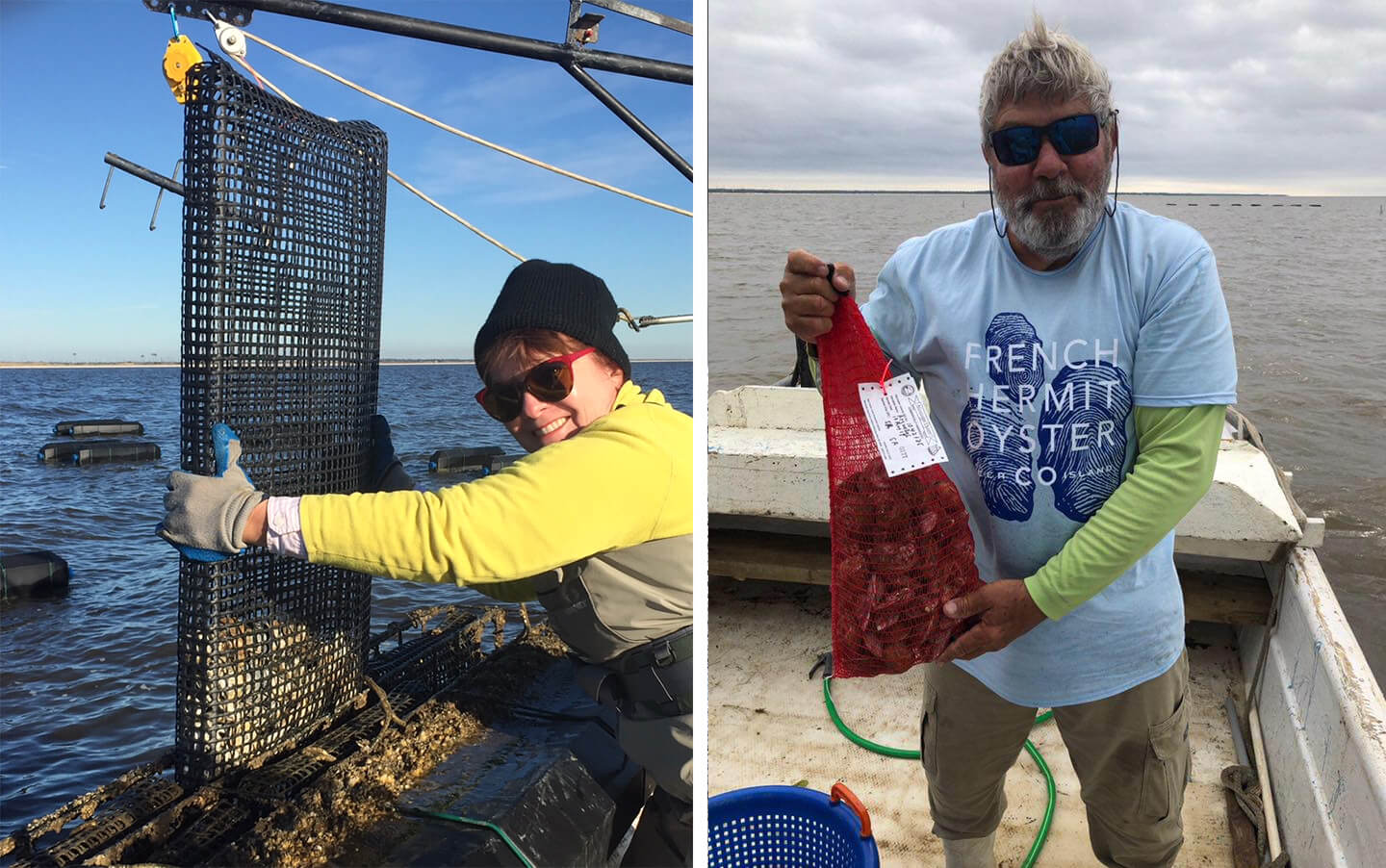
Left, Anita Arguelles empties a bag of growing oysters into a floating cage in the Mississippi Sound. Right, TK Arguelles totes a bag of full-sized French Hermit oysters.
Coastal Mississippi
Anita has a marketing background, and her French Hermit brand took off so quickly that they realized their goal—500,000 oysters, grown on their one-acre lease—would not be enough to keep up with demand. So they formed a co-op, selling other farmers’ oysters under the same name. At Vestige, Perry went through two 100-count sacks every few days; down the road, chef Austin Sumrall was selling three sacks each week at his restaurant, White Pillars, which has an intense focus on local products.
The Mississippi Sound, where these oysters were being grown, is one link in a network of brackish waters; Lake Pontchartrain in southeast Louisiana—actually an estuary—is an adjoining piece. These waters are not typically connected to the Mississippi River, which curls for another hundred miles south of New Orleans, into the Gulf of Mexico. During floods, though, an emergency release valve called the Bonnet Carré Spillway is opened. To spare New Orleans, wooden rods are pulled by cranes, one by one, out of up to 350 concrete-lined gates, allowing Mississippi River water to crash into a 12-mile-long wetland that stretches to the edge of Lake Pontchartrain.
“It doesn’t take long for that large volume [of fresh water] from the spillway to flush out the entire lake,” says Kristi Trail, executive director of the Lake Pontchartrain Basin Foundation. “It literally pushes [the brackish water] out, right away.” This fresh water eventually drains into the Mississippi Sound, where, in May, the salinity dropped to almost zero in certain places.
The Bonnet Carré Spillway was, for most of its history, used rarely—just eight times in its first 70 years. It was opened in 2008, then again in 2011. That year, the spillway was operated for 42 days, the longest stretch since 1979. Economists calculated that its use cost the Mississippi oyster industry $58 million. But that flood was exceptional, the highest ever in some places along the river. How often could that reoccur?
The spillway was opened again, briefly, in 2016. Then again in 2018. It was opened again this February, marking its first-ever use in back-to-back years. For the following six weeks, the Arguelleses watched their farm warily. The oysters survived until the spillway closed on April 11.
Seemingly overnight, almost all of Mississippi’s farm-raised oysters died.
But it was an extraordinarily rainy spring, part of an extraordinarily rainy year: July 2018 through June 2019 were the wettest 12 months ever recorded in the United States. Just four weeks after closing the spillway in May, the U.S. Army Corps of Engineers, which oversees the structure, made an alarming announcement. In another historic first, it would open the spillway twice in one year. The flood had persisted, and the river was rising. In 2010, the Army Corps had predicted that the spillway would be used around once a decade. But May was the sixth time it had been opened in the past 11 years.
On May 27, Anita Arguelles called a scientist and asked about warning signs. What should she watch for? What would show her that the oysters might be in trouble? Any increase in mortality, she was told.
Three days later, Arguelles was in Jackson, Mississippi—three hours inland—on her way to meet with chefs. Her phone rang: Another farmer told her that, overnight, mortality rates on all the leases had jumped from zero to above 70 percent. There was no warning. All Arguelles could offer the chefs was a t-shirt advertising the French Hermit brand. The Arguelleses say they lost $12,000, nearly half their total investment in the farm.
State officials sprang into action. On May 31, one day after the die-off was discovered, Mississippi’s Republican Governor Phil Bryant sent a letter to Secretary of Commerce Wilbur Ross, asking for a “seafood disaster” declaration, which would open a path to federal assistance. In Louisiana, the governor filed a similar request in mid-June; Alabama’s governor followed suit in July, citing not just Bonnet Carré but other local flooded rivers. Eventually, every congressman representing this stretch of coast—four from Louisiana, and one each from Mississippi and Alabama—signed a letter in support of the governors’ requests.
In June, the Mississippi Department of Marine Resources (MMDR) launched a series of weekly updates about the unfolding catastrophe. The shrimping season was opened early, but fishers indicated a low catch on opening day. “Brown shrimp spawn and grow during the spring,” says Joe Spraggins, executive director of the MDMR. Due to the fresh water, “they didn’t have a chance to grow,” he says. Most of this year’s catch has been white shrimp, which prefer fresher water. But catching them could have long-term consequences, as they should be spawning now, producing the next generation.
The trouble is not just seafood. Between April and August, more than 100 bottlenose dolphins were found dead in the Gulf of Mexico, enough for the National Oceanic and Atmospheric (NOAA) to declare an “unusual mortality event.” By late June, an algal bloom had spread across the Mississippi Sound. Because the algae has the potential to produce toxins, the state closed its 26 beaches in late June. They remain closed today.
The flood eventually smashed records. Upriver, in St. Louis, Missouri, the river stood at flood stage for 127 days; in Baton Rouge, the flood lasted 211. By the time the spillway was closed on July 27, more than 10 trillion gallons of fresh water had been pushed into Lake Pontchartrain, enough to cover the entire state of Mississippi to a depth of more than a foot. It will take months before the lake returns to normal. Or so we think. No one really knows.
More than 10 trillion gallons of river water were diverted into Lake Pontchartrain this summer. It will take months before the lake returns to normal.
“That’s typically what we’ve seen, but it’s never been in back-to-back years. It’s never been twice in one year,” Trail says. She notes, too, that the spillway is typically closed by late winter; this year, it stayed open deep into summer, adding to the uncertainty. Trail cautions that even the effects we’ve seen so far are hard to parse. How much is the result of Bonnet Carré, and how much is the result of other, nearby flooded rivers?
Spraggins, too, says there are unanswered questions. The MDMR is keeping an eye on crab populations and monitoring how oysters fare in the eastern Sound, further from the spillway. At a public meeting in August, Mississippi’s Secretary of State, Delbert Hosemann, indicated that it could take three to four years before crab recover. For fish, we don’t have enough information to know.
—
As for oysters, we already know the problem. They can’t migrate on their own. But that doesn’t mean farmers can’t help them move to safety.
Facing the loss of most of their harvest, Mike and Anita Arguelles had one ray of hope. A batch of baby oysters, which had been placed in the water six weeks before the die-off, were still okay. Since they were young and feeding more slowly, the fresh water had not killed them, and they might live if they could be relocated into saltier water. So Anita called the MDMR, which got in touch with colleagues in Alabama. Within 48 hours, the 20,000 oysters, each smaller than a tablet of aspirin, were encased in a Yeti cooler, trucked across the state border, and re-submerged in the Gulf, further from the spillway.
On July 27, the day the spillway closed, the oysters made the return trip. Three days later, I joined the couple in their boat, watching as they pulled mesh sacks out of the water. Anita rinsed the oysters free of algal growth; as she worked, she sifted for “boxes,” or empty oyster shells. She was trying to figure out what impact moving the oysters might have had. “Is this a viable one?” she asked, holding up an undersized bivalve, which she dubbed a “runt.” “Or is he gonna die? He doesn’t look that great right now.”
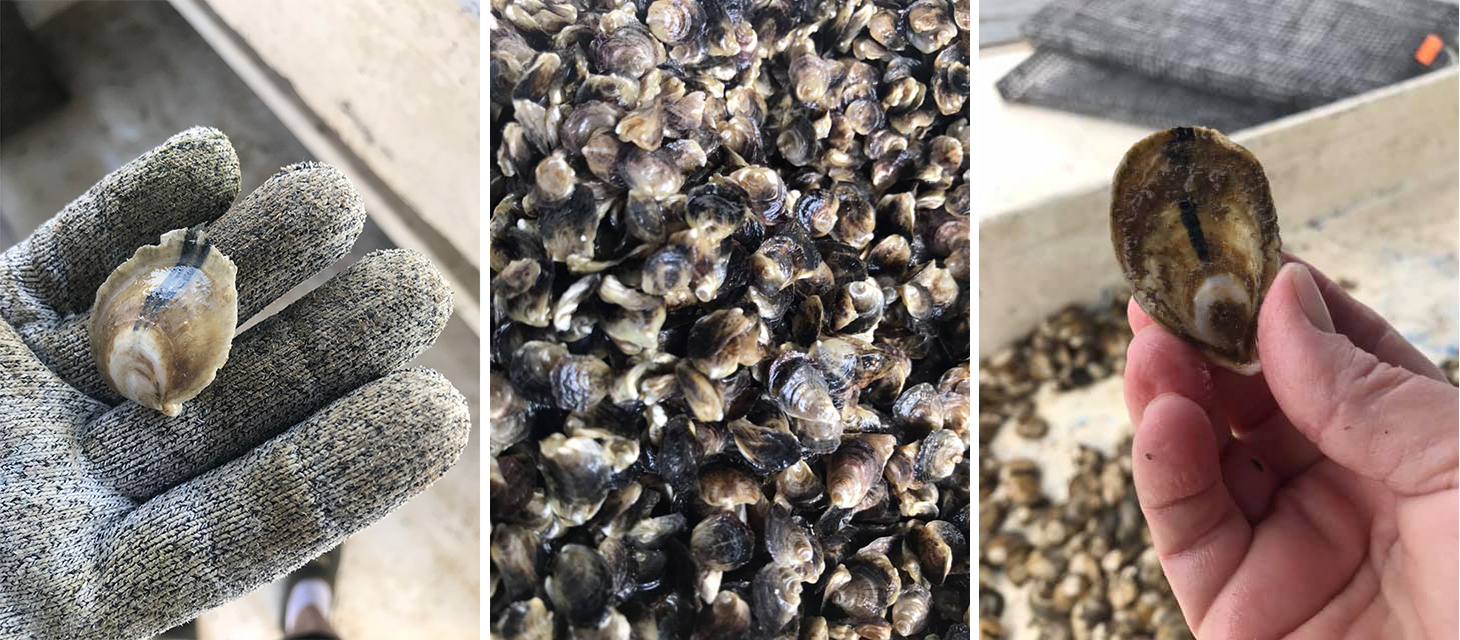
Coastal Mississippi
Anita is painfully aware of how much is beyond her control. Farm runoff is carried down the Mississippi and feeds the massive “dead zone” in the Gulf of Mexico—one more pressure on local fisheries. Much of the nation’s rainfall was delivered to the Sound this year, too. “We’re downstream of everybody,” she says. “All their fertilizer, all their septic systems—all their water—comes down here.”
After a seafood disaster declaration is requested, the Department of Commerce can take months making a decision; it might be years before fishers see the money. Which is why in late July, Republican Senator Cindy Hyde-Smith from Mississippi introduced a bill that would ensure a permanent funding stream for struggling fisheries, whether or not a disaster is declared.
“This is one we didn’t see coming.”
“Farmers and ranchers who experience serious losses have access to well-established USDA programs to help them survive down years,” Hyde-Smith said in a statement. “Commercial fishermen, including aquaculture operations, do not have that option.” Under the Commercial Fishing and Aquaculture Protection Act of 2019, as the bill is called, fishing and aquaculture operators would be compensated anytime their revenues fell below 85 percent of their running three-year average. The money would still be subject to congressional appropriation.
Mark Davis, director of the Tulane Institute on Water Resources Law and Policy, indicates that it’s far too early to know how far the bill will progress. Since there are existing sources of disaster-relief money, he believes resources might better be devoted to managing the water. “I think that it’s important not to lose track of the fact that, you know, you can’t take care of the fishing industry without taking care of the fisheries,” he says.
The USDA programs that Senator Hyde-Smith invoked are criticized by liberals and conservatives alike, in part for the way they’ve led to the kind of fertilizer-intensive farming that pollutes the water. Kendall Dix, an organizer for Healthy Gulf, an environmental advocacy organization, concedes the new bill could be considered a “doubling down” on problematic policies. “But perhaps the federal government would be more likely to look for proactive solutions if they were paying for some of the costs associated with bad environmental policies,” he says. He believes resources need to go toward protecting fisheries, but after decades of economic pressure, the fishing industry needs immediate relief. It’s true even for new farmers like the Arguelleses. Their farm is a labor of love, but it’s also a business—and no one can tolerate year after year of heartbreaking environmental setbacks.
“Mike and I won’t continue to make a bad investment,” Anita says.
—
Milton Segerra, CEO of Coastal Mississippi, the state agency that coordinates tourism for the region, notes that it’s not just fisheries that are suffering. What about the vendors who rent out beach umbrellas or jet skis? Hotels and restaurants are a key part of the local economy.
Segarra’s agency worked hard throughout the summer, meeting with hoteliers and other “front-line” businesses that deal directly with tourists. They provided talking points about local activities, besides the beach, about how the seafood remained safe to eat. Still, early key metrics indicate that visits were down in July, compared to typical years.
“We cannot afford this. Not Louisiana; not us, not the Gulf Coast—something like this every single year or twice a year,” Segarra says. “This is a man-made problem, you know, the spillway. It was built in 1929, 1930. It will require a man-made solution.”
There’s too much river water on hand, and nobody wants it.
Spraggins, director of the MDMR, also noted that our plan for dealing with the flooded Mississippi is nearly 100 years old, launched in the wake of a disaster in 1927. The system includes other spillways, similar to Bonnet Carré, but these are larger, and used less often. Currently, the Corps has little leeway; they can use each spillway only when specific conditions are met. Spraggins wants to see those conditions changed, particularly so that the Morganza Floodway, further north in Louisiana, could be opened early on in floods, reducing our dependence on Bonne Carré. Delbert Hosemann has called for the same thing. He has also asked the Army Corps to conduct an environmental impact study about the effects of the spillway on the Mississippi Sound, which has never been officially examined.
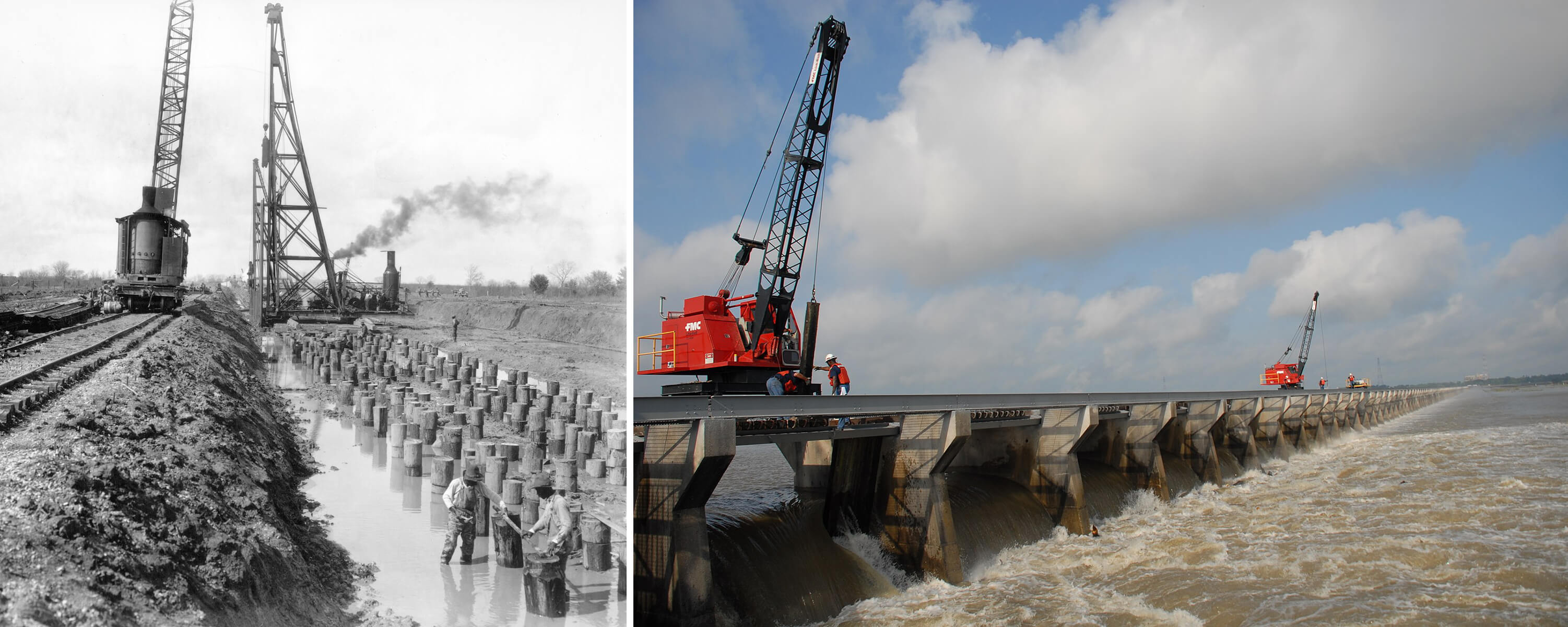
Built to Spill: The Bonnet Carre Spillway was built in the wake of Mississippi’s “Great Flood” of 1927. Left, an archival photo of the structure under construction in 1929. Right, the floodgates diverting river water in May 2011
U.S. Army Corps of Engineers
Opening any floodway is a delicate matter. Morganza has been operated just twice since construction was completed in 1954, and inside its boundaries many hunting camps and farms have been built. The state of Louisiana is planning to build more outlets downstream, not as flood relief but to help build land along its disappearing coast by dispersing river-carried soils. But these will deliver fresh water, too, and local shrimpers point to the disaster in Mississippi as evidence of why it’s a faulty plan. It might build more land, but only at the expense of an industry. In other words, there’s just too much river water on hand—and nobody wants it.
—
Alex Perry, for his part, points out that we’re currently talking about sending human beings to Mars. Handling a flood on a river—without destroying anyone’s home or livelihood, without destroying an ecosystem—that has to be possible, too.
But to handle a flood will require embracing science, which does not always happen in Mississippi. In 2015, the U.S. Senate voted 98-to-1 to affirm that climate change is real; the sole holdout was a Mississippi senator.
“I don’t have a position on [climate change],” Joe Spraggins tells me. “I know this has been the most rain in 124 years, [since] we’ve been keeping the records. So that happened. And why that happened, I don’t know.” It’s a worrying trend, he says, but he believes the earth tends to work in cycles. “We might just be in a rain cycle right now. Nature is going to give us what he gives us, and we just have to deal with it.”
Anita Arguelles, at least, believes in climate change. But she is also an optimist. She thinks this summer’s crisis will prompt state investment in oyster aquaculture, accelerating the state’s position in the industry. Despite this year’s challenges, the state is continuing its training programming; on August 3, just a few days after my trip with the Arguelleses, 21 aspiring farmers were out on the water for the first class.

Left, a French Hermit oyster that Chef Alex Perry prepared for his restaurant, Vestige—complete with pickled white strawberry and onion blossoms. Diverted floodwater from the Mississippi River wiped out his supply earlier this year
Julian Brunt
Chefs, too, have been rallying. Alex Perry had no French Hermit oysters to serve at his fundraising dinner, but he invited Anita and Mike to speak so that diners could hear directly from farmers about the crisis.
Out on the boat, the couple found their relocated oysters mostly thriving. The babies will be ready to sell by October or November. They planned, a few days later, to plant another 30,000 oysters, which would be ready for market by February or March.
As the work finished up, Mike pulled up a happy surprise: a sack full of oversized oysters. In the midst of the disaster, he and his workers had motored to sort through the die-off, but they found a few thousand—around 15 percent—still clamped fiercely shut. Since the salinity in the Sound was rising, these were kept in place. They’re now big enough to sell. Almost too big, really.
They are not for sale—they can’t be, because of restrictions the state put in place after the algal bloom. But as soon as the state lifts its restrictions, Anita said, the couple would be out here, getting them to a chef, who could serve them on a platter. Mike, though, did not want to wait. He shucked one open and slurped it down. After he swallowed, a grin cracked across his face.

